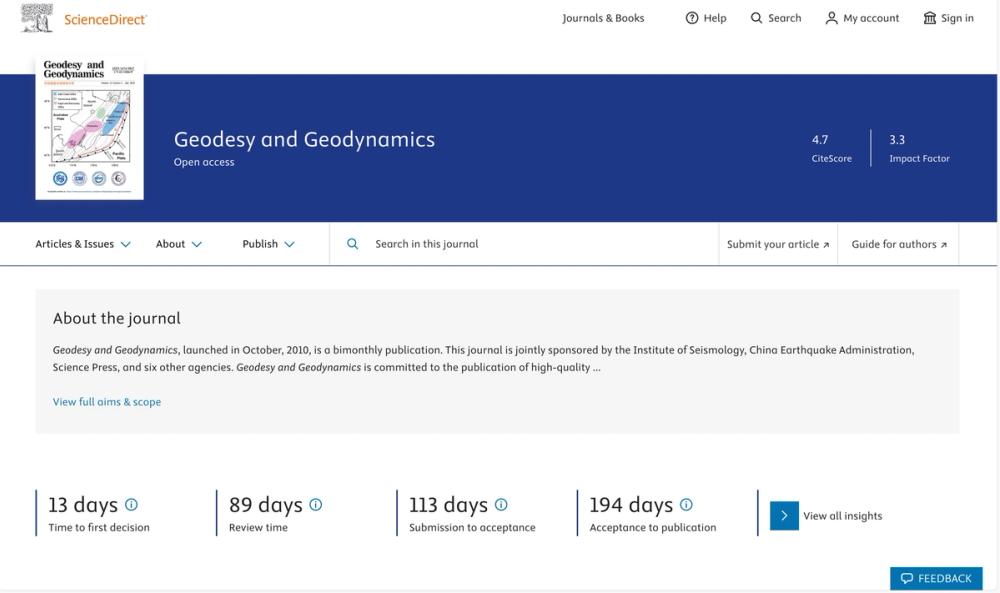Geodesy and Geodynamics, launched in October 2010, is a bimonthly, peer-reviewed, open-access journal jointly sponsored by the Institute of Seismology, China Earthquake Administration, Science Press, and six other agencies. Published by KeAi Communications Co. and hosted on Elsevier’s ScienceDirect platform, it is dedicated to advancing scientific knowledge in the fields of geodesy, geodynamics, and related geoscience disciplines. The journal’s primary mission is to foster the integration of geodetic techniques with geodynamic research, promoting their application in understanding earth processes and facilitating global scientific collaboration.
The journal publishes high-quality, original research articles in English, focusing on novel achievements in areas such as geodetic theory and methods, crustal movement and deformation, earthquake prediction, and interdisciplinary studies involving geologic, hydrological, and geophysical approaches. It emphasizes advancements in monitoring crustal dynamics using geodetic tools, developing new techniques for earthquake prediction, and analyzing earth processes through integrated methodologies. Topics covered include, but are not limited to, global positioning systems (GPS), gravity anomalies, tectonic deformation, and seismology, with a particular focus on their implications for disaster science.
Geodesy and Geodynamics operates a single-anonymized peer-review process, where submissions are initially assessed by editors for suitability and then evaluated by at least two independent expert reviewers to ensure scientific rigor and quality. The editorial board, led by experts like Heping Sun and including prominent researchers such as Carla Braitenberg and Cheinway Hwang, upholds strict standards to maintain the journal’s academic integrity. Authors are required to adhere to ethical guidelines, disclose conflicts of interest, and provide clear, reproducible data, often linking to repositories for transparency. The journal’s open-access model ensures that all articles are freely accessible, with no subscription fees, and authors retain certain reuse rights under a Creative Commons license (CC BY or CC BY-NC-ND), though a copyright transfer agreement is required. Notably, the journal currently does not charge publication fees, making it accessible to both authors and readers.
With an impact factor of 2.8 (2023) and an h-index of 25, Geodesy and Geodynamics ranks in the second quartile (Q2) for geochemistry and geophysics, reflecting its growing influence in the field. It is indexed in databases like Scopus and the Emerging Sources Citation Index (ESCI), enhancing its visibility. The journal has published significant works, such as studies on GNSS receiver autonomous integrity monitoring and earthquake precursors in China, with top affiliations including the China Earthquake Administration and Wuhan University. Its commitment to interdisciplinary research and open access makes it a valuable platform for researchers, practitioners, and academics studying earth dynamics and seismic phenomena globally.




